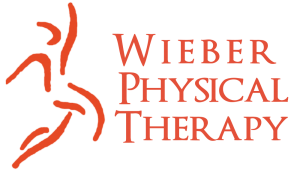
By Megan Westling, DPT, OCS, RYT
Teaching is a great way to challenge your own knowledge. As a physical therapist, I love to have students, not only to continue advancing the physical therapy profession, but to keep up with the evidence. Over the past 6 weeks, Wieber Physical Therapy was lucky to have a physical therapy student from the University of Jamestown, Amber Krenske. She brought with her questions, evidence based skills and a desire to learn. As part of her clinical rotation, she gave a presentation to the therapists. Over first couple of weeks, we were discussing possible presentation topics in areas that interested her and that were relevant to the clinic. After almost daily discussions with patients concerned with side effects from medications, surgeries or injections, who wanted to be an active and educated participant in their care, it became clear. We had a topic for Amber’s presentation: complementary and alternative medicine.
In 5 years of working as a physical therapist, I have had many discussions with patients wanting options for natural and safe complements to physical therapy to decrease their pain and improve their quality of life. With the opioid crisis, people are concerned about what effects medications are having on their body. As a population, we are finally taking advantage of active options: physical therapy, nutrition changes, physical activity, and mindfulness. We are now trying to find solutions and seeking out alternatives to traditional and passive western methods of health care. Over half of adults in the US are using complementary alternative medicines, not only limited to the active approaches I’ve already mentioned but also vitamins, mineral, herbs and essential oils. The interest is counting to rise. Amber did a great job with the research, and in this blog, I will summarize some of her findings.
Glucosamine, or chondroitin, in a natural occurring substance found in and around cartilage cells of the body. The National Institute of health (NIH) conducted a study with 1,518 subjects to determine the effects of glucosamine on osteoarthritis. They found that there was not much difference in pain, inflammation for those with mild to moderate osteoarthriits. However, for the small subgroup with moderate to severe osteoarthritis, there were improvements in pain.
Turmeric (curcumin) is an herbal supplement found mainly in capsule form and also used as a common spice in Indian cooking. Turmeric is used to reduce inflammation, improve skin health, protect cognitive abilities, and alleviate pain. There is strong evidence supporting turmeric in having a similar effect as NSAIDs in reducing inflammation, especially in those with osteoarthritis. It also reduces the concentration of pro-inflammatory cells that contribute to metabolic syndrome, a group of risk factors that increases the risk of heart disease and diabetes. Even in healthy, individuals, turmeric has been found to decrease triglyceride levels and decrease markers of brain aging, stress and liver disease.
Fish Oil is an omega-3 fatty acid coming from the food we eat, as it is not produced by our bodies. It has been proven to decrease bone mineral density loss in those with osteoporosis. It also works to decrease pain and morning stiffness in those suffering from rheumatoid arthritis. Research shows that dietary fish oil 2x/week is associated with a reduced risk of heart disease.
Vitamin D promotes Calcium absorption necessary for bone growth. A study by the NIH showed that Vitamin D plays a role in the body’s immune responses and reducing inflammation. A deficiency in Vitamin D contributes to auto-immune diseases, such as rheumatoid arthritis and infection.
Cannabidiol Hemp Oil (CBD) is made from high CBD, low THC hemp. Unlike medical marijuana, cannabidiol oil is non-psychoactive, as it is low in THC. It is over $100 for a one month supply, and so is not accessible to everyone for longer term use. It works to regulate the bodes homeostasis and has moderate level evidence to support is effects in controlling chronic pain.

Leave a Reply
You must be logged in to post a comment.